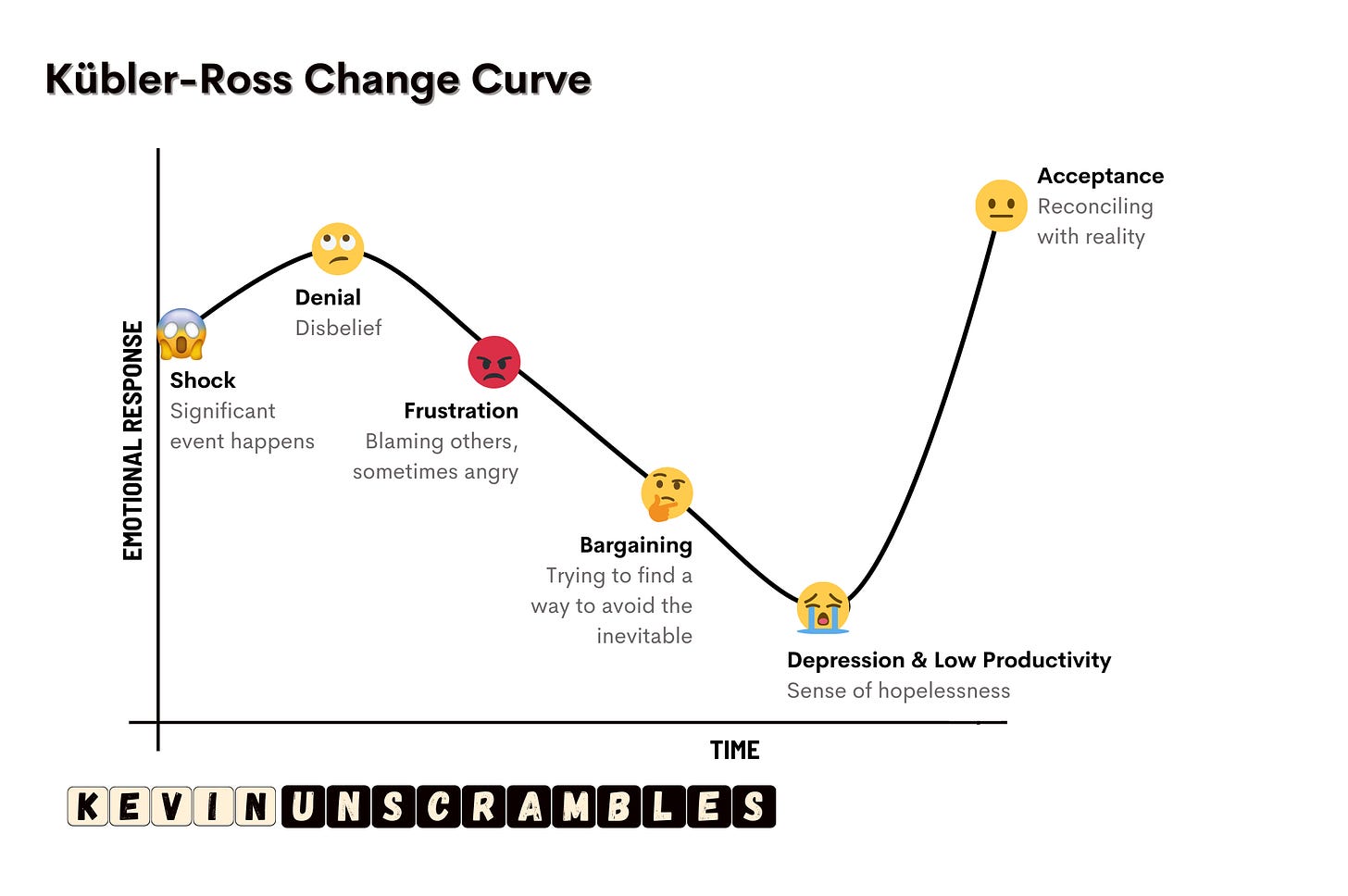Change is Constant, But Your Reaction to It Determines If You Thrive or Stall
Here is a key framework to understand and manage the process of change
External disruption is no longer a rare occurrence; it’s a constant force reshaping businesses and careers alike. Political change, economic shocks, and technological advancements can reshape how businesses operate. Election outcomes and shifts in leadership priorities can lead to dramatic policy changes, such as Brexit in the United Kingdom or trade tariffs in the United States, that disrupt entire industries. Similarly, inflation and interest rate shocks force businesses to adapt rapidly to evolving economic conditions.
While political and economic disruptions have forced companies to adapt, technological innovation, especially artificial intelligence, is also a key driver of transformation. Disrupters such as artificial intelligence are rapidly reshaping business operations. In today’s workplace, responding strategically to disruption isn’t just about survival—it’s key to unlocking career advancement.
AI and the Disruption of Middle Management
AI is significantly reshaping middle management as organisations increasingly prioritise efficiency, agility, cost reduction, and customer centricity. This shift has fueled interest in flatter organisational structures, sometimes referred to as "bossless" workplaces, where traditional hierarchies give way to more decentralised decision-making.
While a completely bossless organisation is probably a fallacy, AI now enables companies to automate many traditional management functions, allowing them to move further in that direction. Recent research by Gartner suggests that 20% of organisations plan to use AI to flatten their structure, with some expecting to eliminate more than half of their middle management positions through 2026.
For many middle managers accustomed to traditional command-and-control frameworks, these changes may feel like a direct challenge to their roles. However, as AI reshapes decision-making, success will depend on their ability to redefine their value by embracing strategic leadership, adaptability, and innovation.
However, while AI may reduce traditional managerial roles, it is also creating opportunities for middle managers to shift toward more strategic, analytical, and leadership-oriented tasks. The challenge is not just about job preservation but also about role evolution.
Navigating Disruption with the Kübler-Ross Change Curve
Change is constant, and no one, including management, is immune to it. Disruptive shocks and continuous technological advances require an adaptive response. One of the most effective tools for understanding and managing change is a framework many middle managers may have already used to guide their teams through past transformations: the Kübler-Ross Change Curve.
The Change Curve originates from Elisabeth Kübler-Ross’s "Five Stages of Grief" model, introduced in her 1969 book On Death and Dying. Initially used to describe emotional responses to grief and loss, the model has since been adapted across various fields, including business, finance, and politics, to explain how individuals, business organisations, and even countries react to significant change.
For example, during political crises—wars, economic collapses, or pandemics—leaders can use this model to anticipate and shape public sentiment over time. Similarly, in financial markets, investors often go through denial (expecting a quick market recovery), anger (blaming policymakers), and eventual acceptance of new economic conditions.
How the Change Curve Works
The Change Curve describes the psychological journey people undergo when faced with significant change. It typically follows these stages:
Shock – A significant, unexpected event occurs.
Denial – Initial resistance, disbelief, or refusal to accept the change.
Anger – Realisation of the impact, leading to frustration, fear, or blame.
Depression & Low Productivity – A period of uncertainty, withdrawal, and low motivation.
Acceptance – The ability to embrace the new reality and incorporate it into daily life.
This framework is widely used in change management within organisations to help leaders anticipate resistance, guide transitions, and accelerate acceptance.
Turning Disruption into Opportunity
Understanding the Change Curve is the first step in navigating disruption. By recognising where they are on the curve, professionals, particularly middle managers, can move past resistance and uncertainty to embrace new opportunities and take actionable steps toward growth.
The curve is also a valuable tool for senior leaders in supporting their management teams during times of transition. As AI automates routine managerial tasks, the role of middle managers will likely evolve toward higher-value functions such as strategic planning, cross-functional leadership, and innovation.
Professionals who proactively develop AI-augmented leadership skills, learn to navigate ambiguity, and position themselves as problem-solvers will lead the charge in transforming businesses and driving long-term success. Those who resist? They risk being sidelined in an AI-driven workplace. The future belongs to those who embrace change, take initiative, and continuously adapt.




